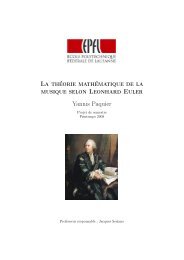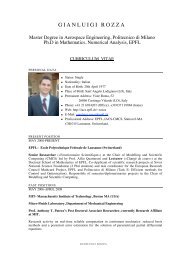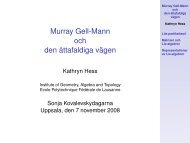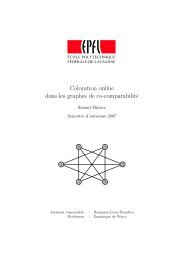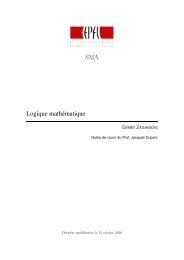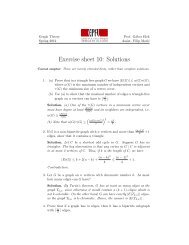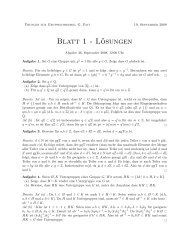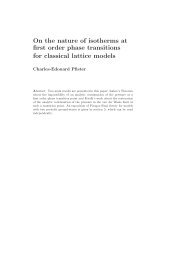Decision Models in Skiable Areas - EPFL
Decision Models in Skiable Areas - EPFL
Decision Models in Skiable Areas - EPFL
Create successful ePaper yourself
Turn your PDF publications into a flip-book with our unique Google optimized e-Paper software.
6 MODEL OF DEMAND IN A SKIABLE AREA 10<br />
which the decision maker is end<strong>in</strong>g at. Let also be LD the lift which the decision maker<br />
is considered to chose. The set SLD is the set of ski slopes leav<strong>in</strong>g from the top of LD.<br />
Then the six attributes are:<br />
• The first attribute is the <strong>in</strong>formation about the most difficult level of the pistes on<br />
the different ways from O to D:<br />
Maxmax D O = max<br />
w∈W D O<br />
max<br />
i=1,...,k lsi , where w = s1 ∪ s2 ∪ . . . sk (20)<br />
• The second attribute is the m<strong>in</strong>imum level you have to master for ski<strong>in</strong>g form O<br />
to D.<br />
M<strong>in</strong>max D O = m<strong>in</strong><br />
w∈W D O<br />
max<br />
i=1,...,k lsi , where w = s1 ∪ s2 ∪ . . . sk (21)<br />
• The MaxLD attribute is the value of the highest level of the ski slopes leav<strong>in</strong>g<br />
from the top of LD<br />
MaxLD (22)<br />
= max ls<br />
s∈SLD • The M<strong>in</strong>LD attribute is contrary to the MaxLD attribute the lowest level of ski<br />
slopes leav<strong>in</strong>g from the top of LD.<br />
M<strong>in</strong>LD<br />
= m<strong>in</strong> ls<br />
s∈SLD • The next attribute is a b<strong>in</strong>ary value and it is about the protection aga<strong>in</strong>st the<br />
weather of the considered lift LD and noted P rotLD . It counts true (”1”) if the<br />
skier is protected aga<strong>in</strong>st weather on the lift, and false (”0”) otherwise. This<br />
attribute co<strong>in</strong>cide <strong>in</strong> the particular case of Verbier with the attribute which describes<br />
if the skier have to put off his skis or snowboard. This means that at<br />
every lift with a weather protection you have to put off your skis or snowboard.<br />
(23)<br />
• The last attribute describes the possibility to have a seat or not while us<strong>in</strong>g the<br />
lift LD. It is also a b<strong>in</strong>ary value and noted SeatsLD.<br />
Note: A such cod<strong>in</strong>g of the ski slope level makes the hypothesis that a black ski slope<br />
is considered two times more difficult than a blue one. This hypothesis is accepted <strong>in</strong><br />
the Basic Model such as the first approach to improve the Basic Model. The second<br />
Approach respect the fact, that a black ski slope has not to be two times more difficult<br />
than a red one.<br />
The determ<strong>in</strong>istic term In the Basic Model, the determ<strong>in</strong>istic term is only depend<strong>in</strong>g<br />
of the alternatives and not from the decision maker itself. Also the constants has been<br />
omitted. As described <strong>in</strong> section 3.4.1 it has the follow<strong>in</strong>g form:<br />
Va(xa) = �<br />
βkxa(k) (24)<br />
or with the particular attributes and alternative LD<br />
k<br />
VLD (xLD ) = β1Maxmax D O + β2M<strong>in</strong>max D O + β3MaxLD + β4M<strong>in</strong>LD (25)<br />
+ β5P rotLD + β6SeatsLD (26)<br />
where the same notation is used as above. In further sections, we pose



